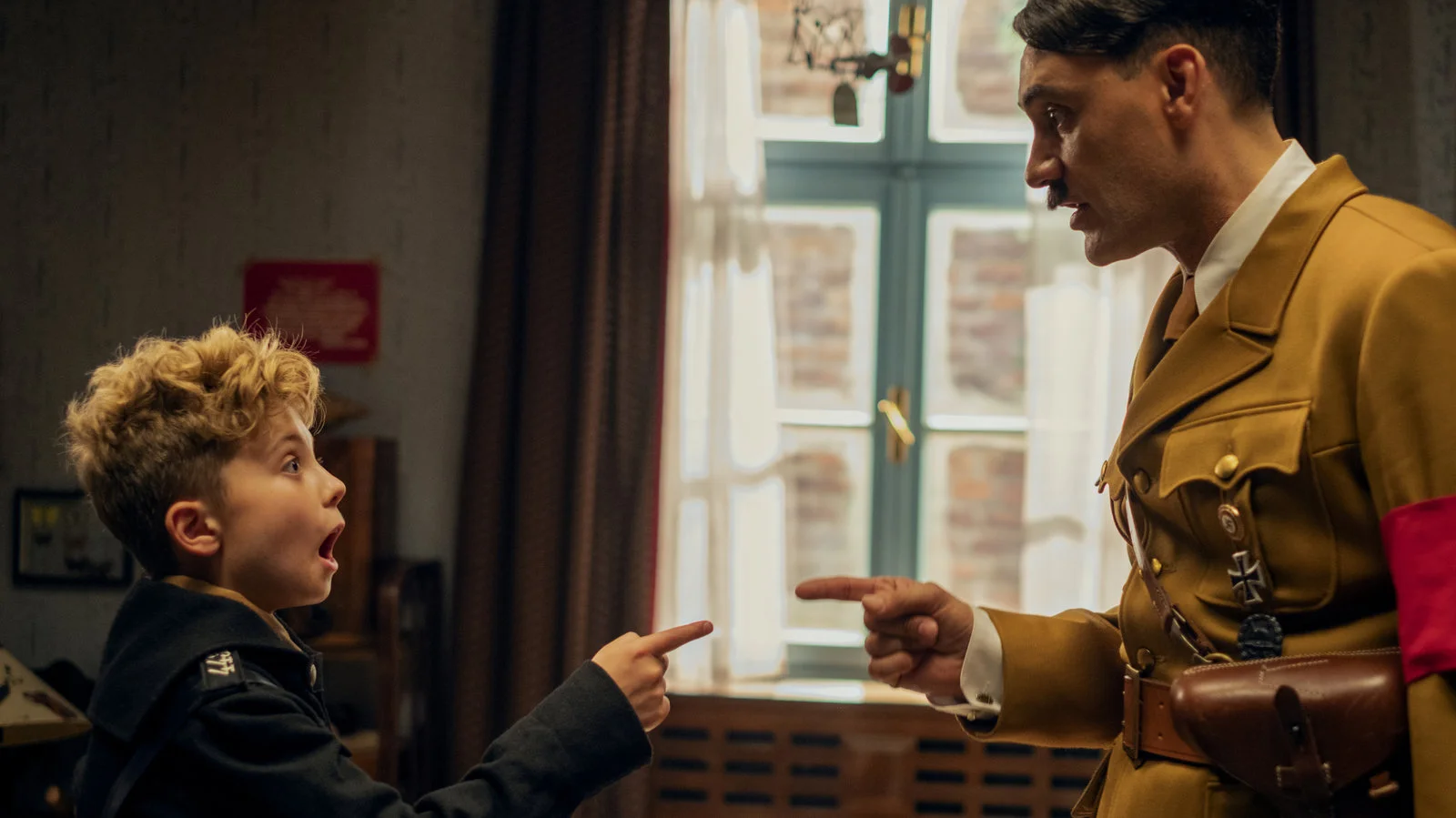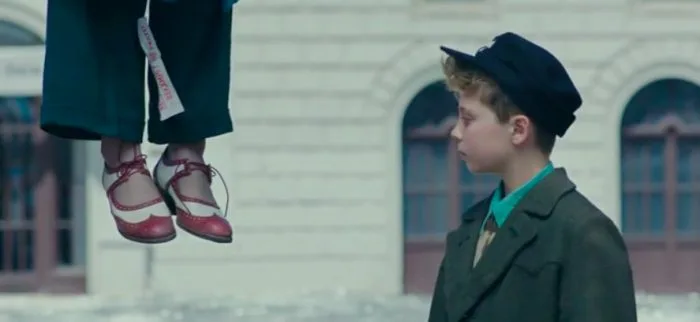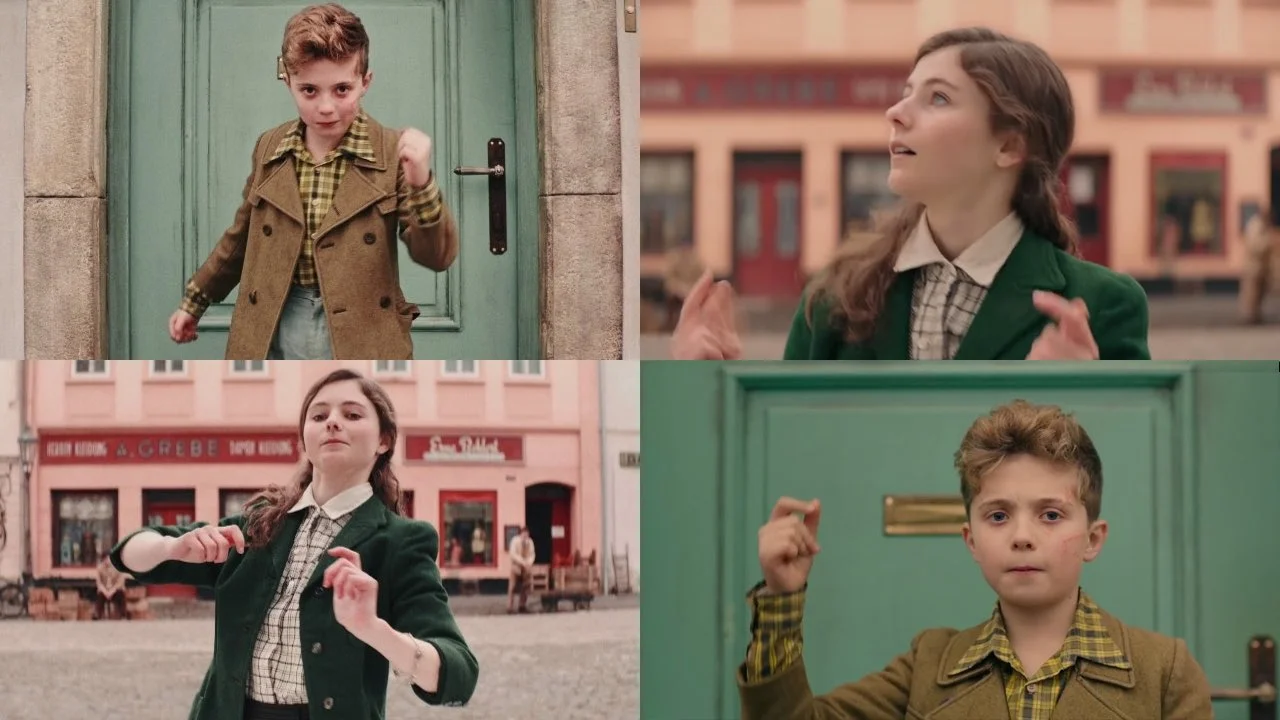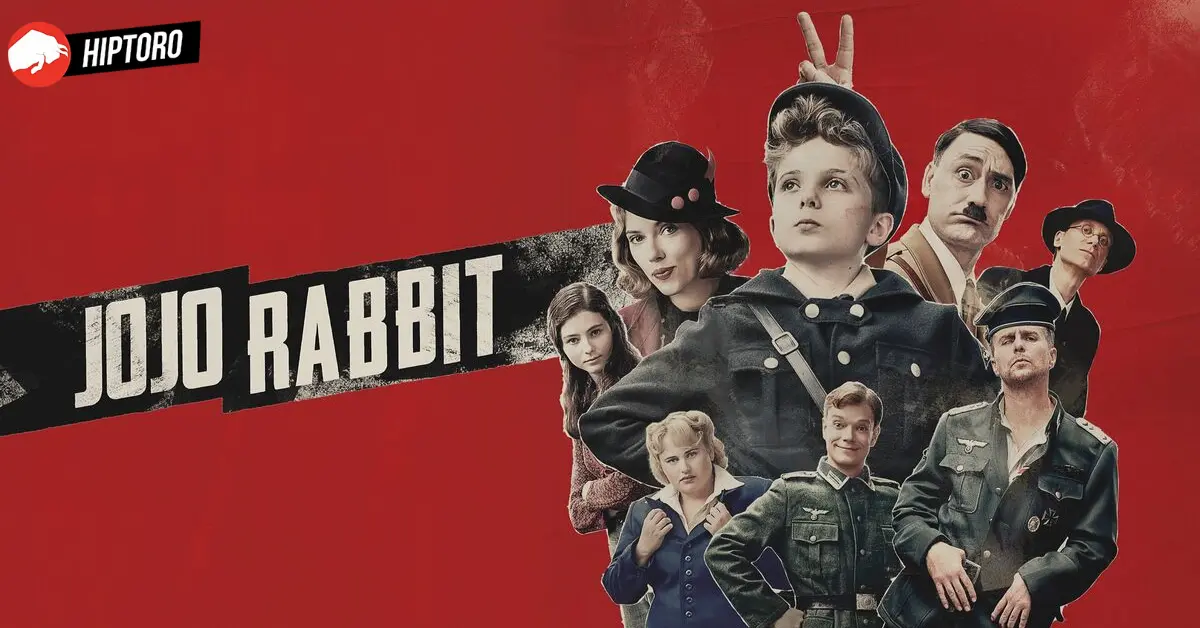Jojo Rabbit stands as a remarkable testament to the power of satire. Directed by Taika Waititi, this poignant yet comedic film takes audiences on a unique journey into the heart of World War II, where an unlikely friendship blossoms. The soul-wrenching yet funny movie was well-received by all critics and audiences.
Jojo Rabbit Plot Summary
Jojo Rabbit’s story unfolds against the backdrop of World War II, offering a unique perspective on a tumultuous era. The film follows the journey of Jojo, a young German boy deeply influenced by Nazi ideology, whose imaginary friend happens to be a whimsical and goofy version of Adolf Hitler, brilliantly portrayed by director Taika Waititi himself.

Jojo’s life takes a surprising turn when he discovers that his mother Rosie, played by Scarlett Johansson, is hiding a Jewish girl named Elsa in their attic. As Jojo grapples with his brainwashed beliefs and his newfound friendship with Elsa, the film masterfully navigates the fine line between satire and heart-rending reflection.
Rosie was a member of the resistance, going against the Nazis by sheltering a Jew in her house. Unknown to her family, she was actively engaged in her own form of rebellion, distributing pamphlets that exposed Nazi lies. Therefore, she was hanged to death in the center of the town to illustrate the consequences of going against the Nazis.
Jojo’s world was turned upside down when he found himself stranded in the middle of the road and his mother’s shoes in his line of view. Looking up, he was met with the sight of his mother’s lifeless body. This is one of the most heartbreaking and tear-jerking moments in Jojo Rabbit.

As the narrative unfolds, we witness the bond between Jojo and Elsa growing, leading to a transformation in Jojo’s perspective. Through heartfelt moments and comedic interludes, the film subtly dismantles the absurdity of hate and prejudice, highlighting the importance of empathy and understanding.
In the midst of war-torn landscapes and societal chaos, Jojo Rabbit orchestrates an unconventional tale that challenges conventions and stirs emotions. The film’s ability to blend humor, drama, and thought-provoking themes results in an unforgettable cinematic experience that resonates long after the credits roll.
Why Do Jojo and Elsa Dance At The End of The Movie?
As we reach the climax of Jojo Rabbit, Jojo gives Hitler the boot, symbolizing that he has completely removed all traces of Hitler’s influence from his mind and fully comprehends the heinous nature of his rule.
As Jojo searches for sustenance in a war-torn city, he does not find food but instead is reunited with his buddy Yorki. Upon discovering that the battle has concluded and the German military has been apprehended, he notices that Captain K is among those captured when he sees Jojo being taken away too. Captain K quickly takes off Jojo’s coat and reveals he is Jewish to spare him. In the end, we hear gunfire; our brave Captain K is tragically killed.
After all the commotion, Jojo returns home. He deceives Elsa into believing that the Nazis had been victorious and that she needs to remain with him. It’s easy to comprehend why, as a youngster, he would like to have somebody close to him after his mother passed away. Furthermore, he had strong feelings for Elsa.

He was filled with guilt and eventually admits to her that the Germans had been defeated and the Jews were liberated. She slaps him, yet right away accepts his apology. This was the first time she had stepped out of the house as a free individual. To honor their newfound freedom, their first action was to dance.









